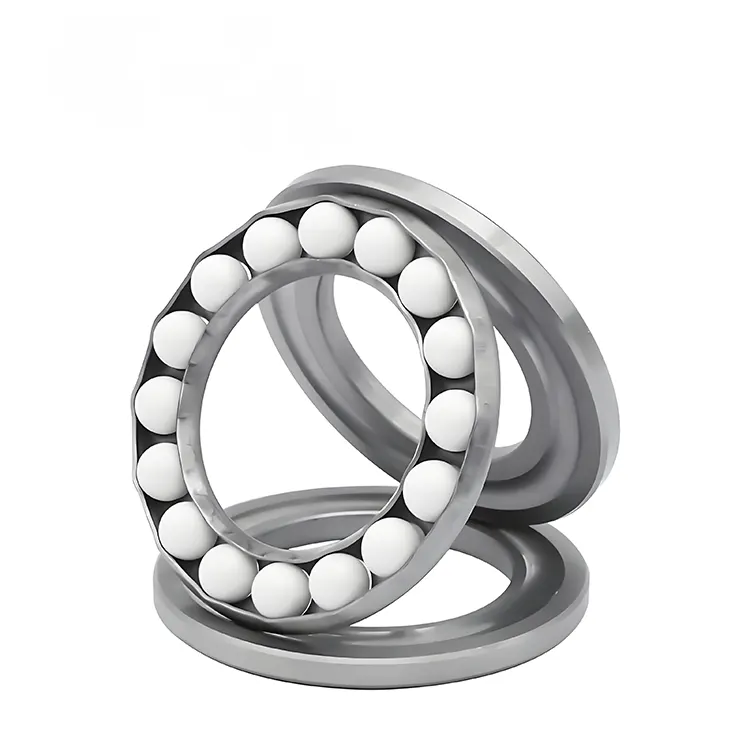Ceramic ball bearings play an important role in key equipment in various industries with their unique performance, and have become the preferred components for improving equipment stability and life.

In the field of high-speed machine tools, ceramic ball bearings are the core guarantee of precision machining. They use silicon nitride ceramic balls (density is only 40% of steel) and high-strength bearing steel outer rings, which can withstand speeds of more than 30,000 revolutions per minute, 50% higher than the maximum speed of steel bearings. In CNC lathe spindle applications, due to low centrifugal force and low heat generation, the machining accuracy can be controlled within 0.001mm, which is particularly suitable for precision milling of aerospace parts.
New energy vehicle motors rely on their high-voltage resistance. Ceramic material insulation resistance> 10¹⁴Ω, which can effectively block motor shaft current and avoid bearing electrocorrosion damage. In the 800V high-voltage platform motor, the service life of ceramic ball bearings is more than three times that of steel bearings, and they can still maintain a stable radial clearance (0.01-0.03mm) under temperature fluctuations from -40℃ to 200℃, adapting to the harsh working conditions of battery drive systems.
The medical device field values its cleanliness. The ceramic surface is smooth and non-porous, and does not react with blood or liquid medicine. In the joint bearings of surgical robots, it can achieve long-term operation in a sterile environment. The ceramic ball bearings equipped in dental handpieces can still maintain low vibration (amplitude <2μm) at a speed of 400,000 rpm, improving the accuracy of tooth grinding and patient comfort.
Its advantages are more prominent in extreme environment equipment. In high-temperature mud pumps for oil drilling, ceramic bearings can withstand 250°C high temperatures and mud erosion, with a wear rate of only 1/10 of that of steel bearings; in deep-sea exploration instruments, their seawater corrosion resistance (10,000 hours of salt spray test without rust) ensures that the equipment can operate normally in the deep sea at a depth of 1,000 meters, and the maintenance cycle is extended to more than 5 years.
In addition, in scenarios such as high-speed spindles of textile machinery and yaw bearings of wind turbines, ceramic ball bearings can reduce energy consumption by reducing friction loss (friction coefficient as low as 0.001), helping equipment upgrade to high efficiency and long life, and becoming an important support for technological breakthroughs in various industries.
